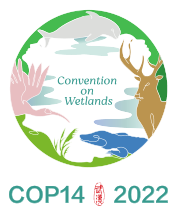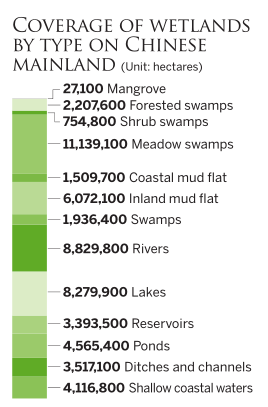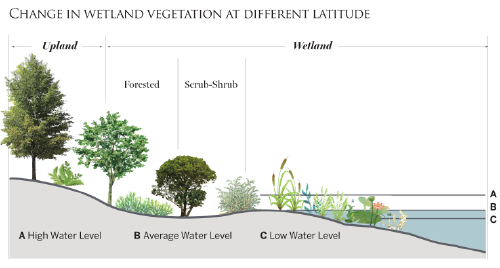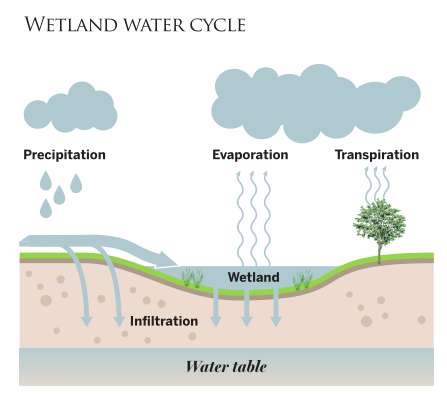WETLAND ECOSYSTEM
Dubbed the kidneys of the Earth, wetlands are of significant importance to the planet, as they help with the conservation of water sources, water quality purification, flood control, climate mitigation and biodiversity. To increase understanding and awareness of this critically important ecosystem, World Wetland Day is celebrated on Feb 2 across the globe. Home to 4 percent of the world's total area of wetlands, China satisfies the needs of one-fifth of the global population for wetland production, life, biology and culture, making key contributions to the protection and wise use of the worldwide wetland system. Following the philosophies of respecting, protecting and harmonizing with nature, China has made substantial progress in conserving wetlands and ensuring biosafety, bringing about half of wetlands nationwide under protection.
A string of tags placed on wetlands show their vital role and the hallmark services their unique ecosystems provide to human society and nature.
According to the Convention on Wetlands of International Importance Especially as Waterfowl Habitat, wetlands are defined as "areas of marsh, fen, peatland or water, whether natural or artificial, permanent or temporary, with water that is static or flowing, fresh, brackish or salt, including areas of marine water the depth of which at low tide does not exceed 6 meters".
The convention, signed in 1971 in Ramsar, Iran, is known as the Convention on Wetlands.
Hailed as the kidneys of the Earth, wetlands are capable of degrading pollutants and water purification and storage, with plants, fungi and algae in the ecosystem contributing to the process.
Likened to "natural reservoirs", wetlands, which hold a great deal of water inside indigenous vegetation, coupled with spongy peat deposits in soil, are key to the storage and continuous supply of water resources. They play a pivotal role in recharging underground water, improving water quality and maintaining regional water circulation.
As one of the critical carbon sinks on the planet, wetlands are closely tied with climate change. Some of them are covered with luxuriant vegetation, absorbing carbon dioxide in the air, while at the same time, an accumulation of plant and animal remains in the wetland soil takes time to be degraded.
A healthy wetland ecosystem features a low pace of degradation and high pace of carbon sinking.
Plants, algae and some bacteria in the wetland absorb carbon dioxide through photosynthesis, and then through degradation and respiration, release methane and carbon dioxide back into the air, thus forming wetland carbon cycling and providing ecological services to humanity.
The carbon stock in wetlands accounts for 25-30 percent of the total in land ecosystems, according to scientific research.
As one of the most productive and biologically diverse ecosystems on the planet, wetlands, which cover only 8-9 percent of the Earth's land surface, provide habitats for 40 percent of the world's plant and animal species, earning fame and renown as gene banks.
China has a total wetland area of around 56.35 million hectares, ranking fourth worldwide, data from the National Forestry and Grassland Administration show.
As a national strategy, wetland conservation has become a key link to promote the integrated protection and systematic management of mountains, rivers, forests, farmlands, lakes, grasslands and deserts, and the comprehensive development of forestry, grassland and national parks, an official from the administration said.
Over the past decade, more than 800,000 hectares of wetlands have been added or restored. The use of wetlands in water conservation, water purification, carbon sequestration and biodiversity protection has been significantly enhanced. The ecological status of important wetlands across the country has also been effectively improved.
With rich and diverse wetland resources, the Chinese government has been advancing wetland restoration and protection across the country.
In an alpine swamp zone on the northeastern edge of the Qinghai-Tibet Plateau between the northwestern part of Sichuan province and the south of Gansu province, there are three Wetlands of International Importance — the Sichuan Ruoergai Wetland National Nature Reserve, the Gansu Yellow River Shouqu Wetlands and the Gansu Gahai Wetland Nature Reserve.
The region, which is rich in peatland and has a high carbon stock, is key to recharging and conserving the water sources in the upper reaches of the Yellow River and Yangtze River.
During the 13th Five-Year Plan period (2016-20), 38,100 hectares of wetland has been restored in the region, by various means such as recovering vegetation and addressing gully erosion. An ecological restoration research program targeting degraded alpine wetlands was launched in Ruoergai to of er technological solutions for recovery of such wetlands.
In Beijing, more than 970 hectares of wetland was restored from 2012 to 2018, when the city was on an afforestation drive.
The Caijia River basin in Yanqing district on the outskirts of Beijing is one of the largest afforested areas in the city, where vast expanses of forests were planted along the river. The recovered wetland provides a habitat for a wealth of waterfowl, giving full play to its ecological functions and becoming a popular holiday destination.
















